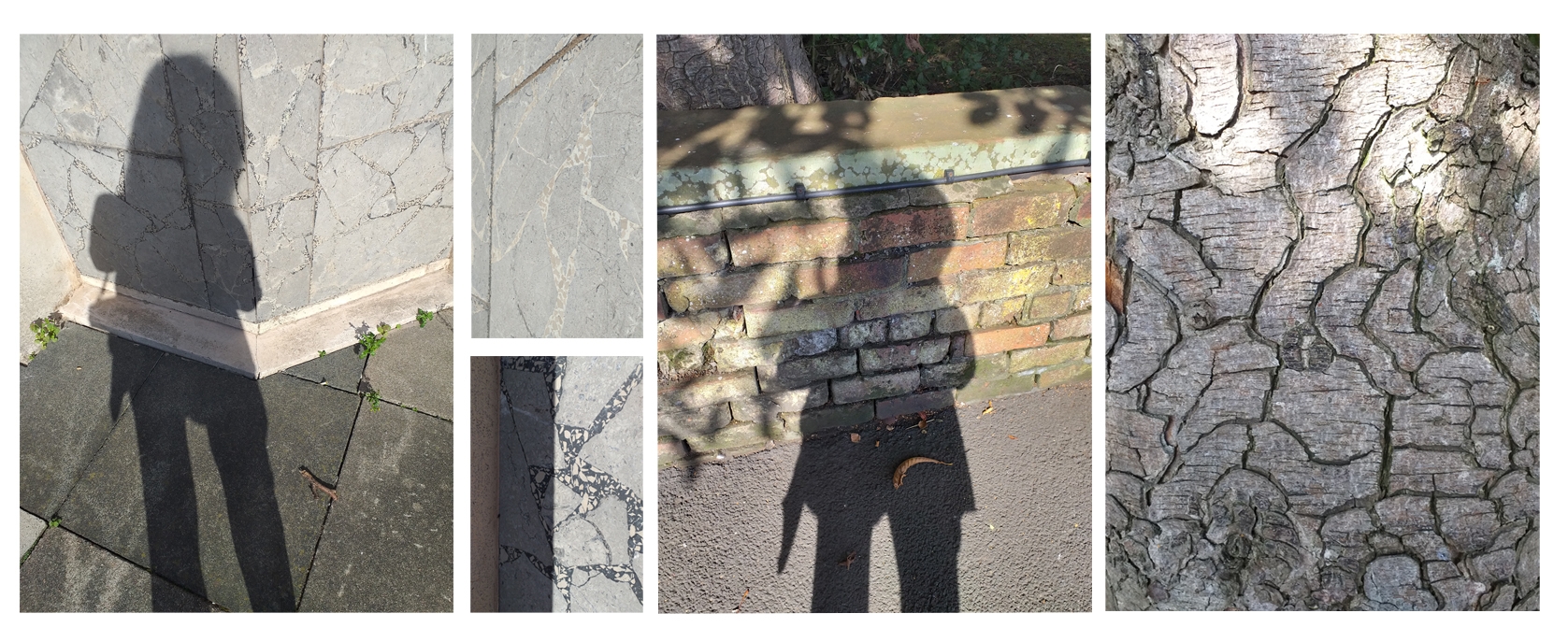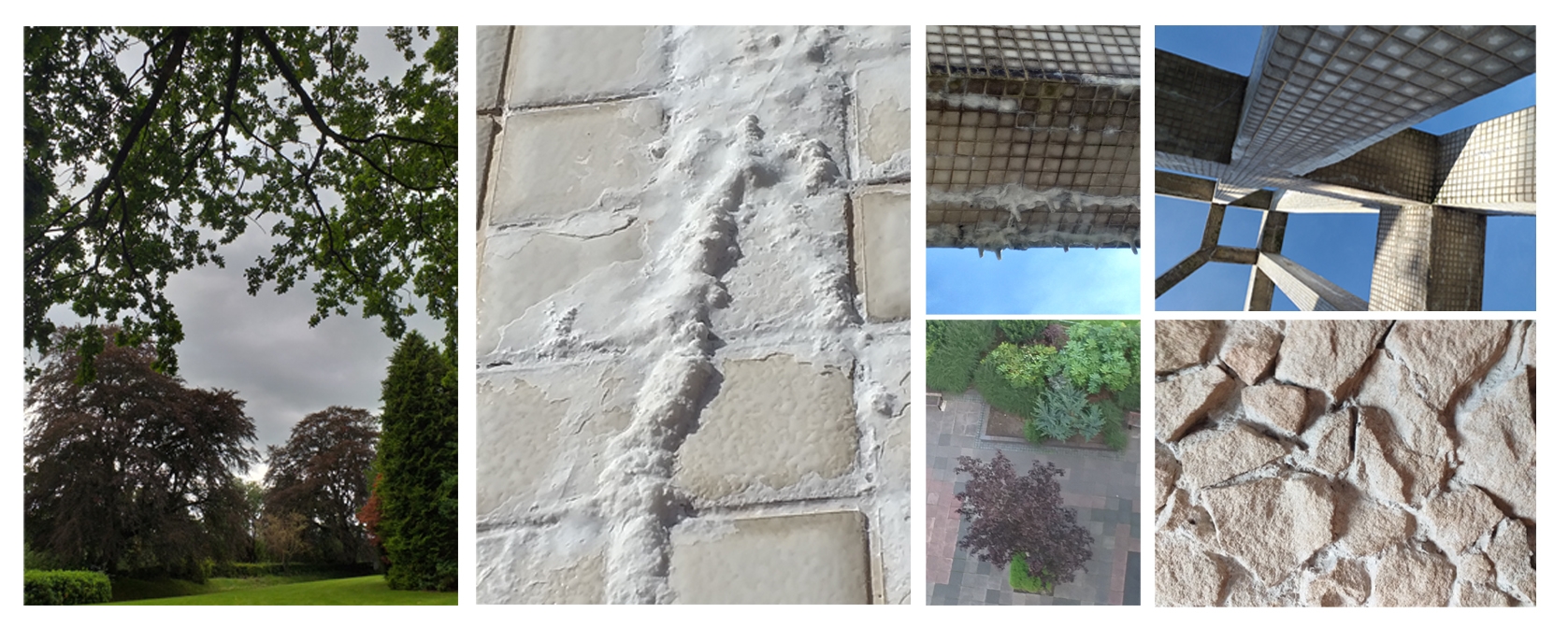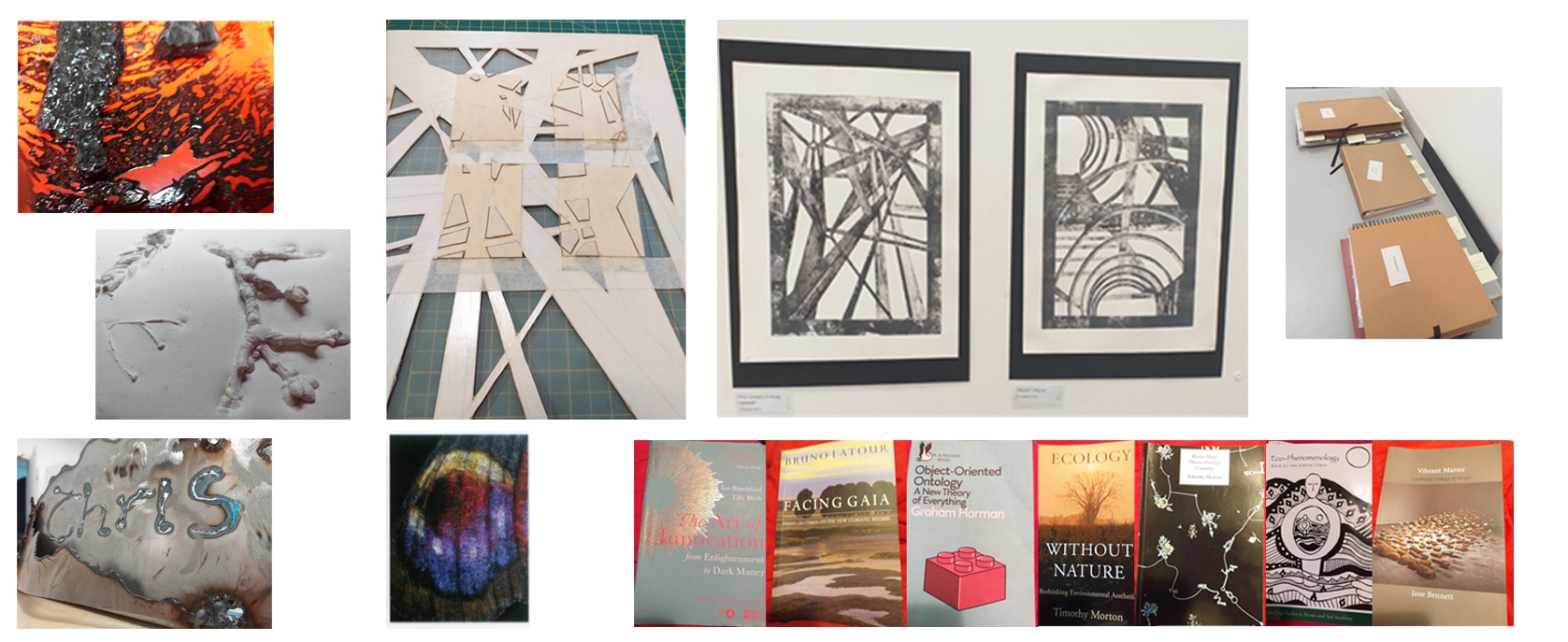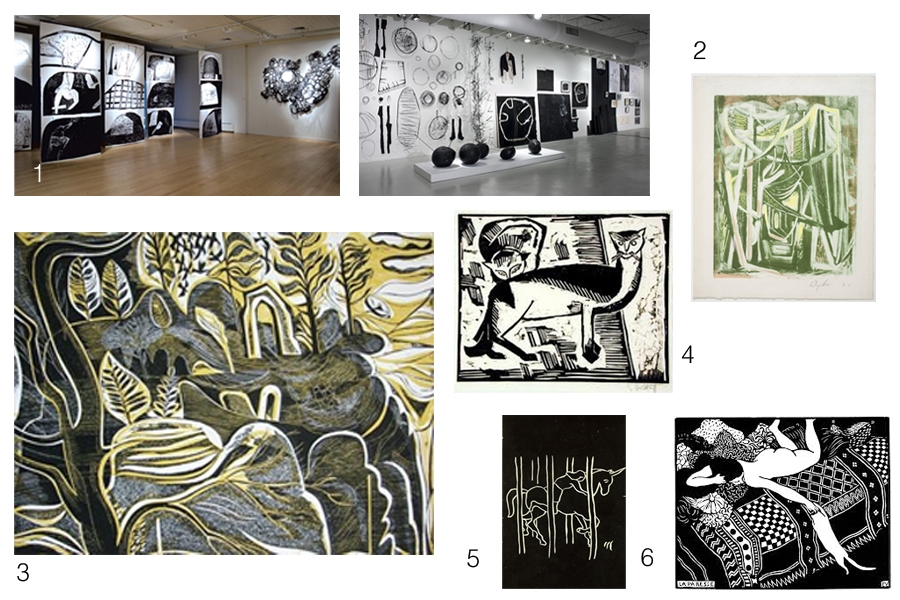Walking around seems a good way to re-cap the first Semester of my M.A. in Contemporary Fine Art. Perhaps ‘wandering’ would be better, inflected with a sense of aimlessness and or being lost. I will stick with walking around for now and try and elicit something more purposeful and well-oriented by way of a reflective device.
The semester began with a cultural walk around Carlisle.

The hesitant presence of the tentative MACFA student.

Later came an art walk around Glasgow.

For some reason the visual responses, investigations and outcomes that these experiences were generating just did NOT – neither by wish, nor hope, nor prayer – seem to aid in articulating the work I had proposed at the start of the semester – very frustrating.
The Road Not Taken (a detour)

In the beginning, I was quite engaged with exploring some new materials, media and processes. (1.left top down) Tar, plaster, steel – all I think seated in the mentality of the ‘workshop induction phase’ of the course – inculcation into a new institution. But experimentation did not relate to my proposal questions – it stubbornly refused to go that way. I travelled down to Lancaster one Friday and enjoyed a spell in the Ruskin Library before attending a seminar by Franziska Schenk about irridescence (3) and mingling with tea and biscuits afterwards, I actually met Sarah Casey. Driving home, I felt quite despondent – the contrasting emotion of how enervating and exciting the day had been, pitted against frustration with my practice. I decided to depart from my proposal to follow a different path and indulge in a little print project (2 &4 )based upon the superstructure of the Civic Centre in Rickergate and taking a little inspiration from Bronwen Sleigh’s work at Glasgow Print Studio. Reflecting upon things, I was coming to realise what a huge ask it is to expect yourself to start a new course, orientate yourself in a new institution – different people, places and procedures- my art journal and sketchbook(5) were demonstrating this , filling up rapidly with nothing useful while also expecting yourself to advance your practice in a coherent way. It was enjoyable to work in the print studio doing a low-tech project but the reading was what was really capturing my enthusiasm … and what a lot of it there was! (6)


